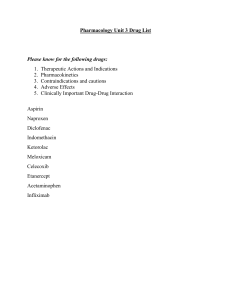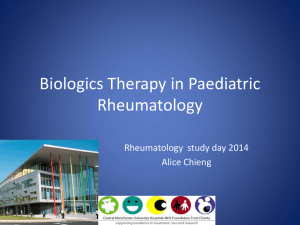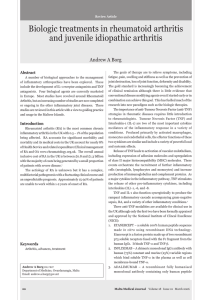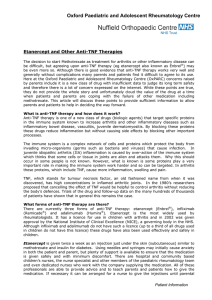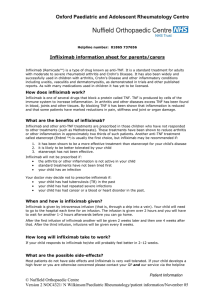Role of observational studies in the UK D S h G
advertisement
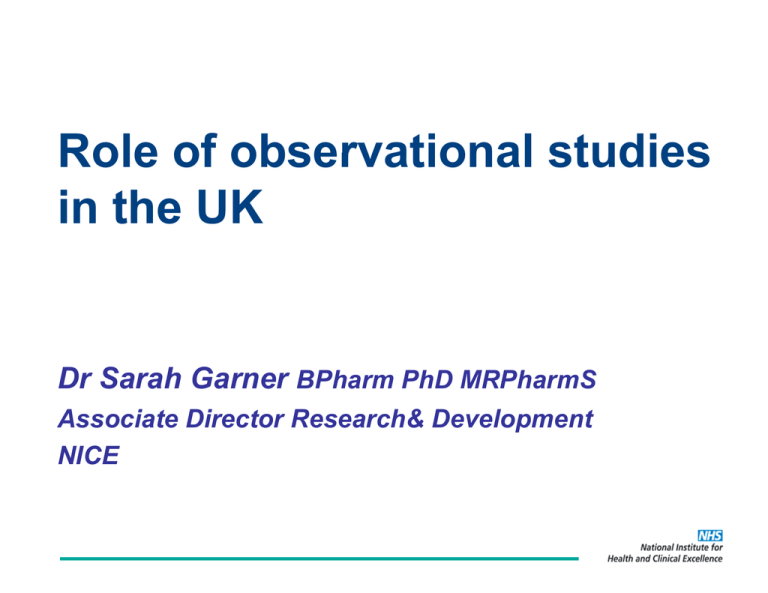
Role of observational studies in the UK D S Dr Sarah hG Garner BPharm PhD MRPharmS Associate Director Research& Development NICE National Institute for Health and Clinical Excellence (NICE) • • • Public health – guidance on the promotion of good health and the prevention of ill health for those working in the NHS NHS, local authorities and the wider public and voluntary sector Clinical practice – guidance on the appropriate treatment and care of people with specific diseases and conditions within the NHS. Health technologies – guidance on the use of new and existing medicines medicines, treatments and procedures within the NHS Fund within 3 months What gets taken into account? ClinicalClinical effectiveness Costeffectiveness U Uncertainty t i t Scientific value judgements Consultation C l i Comments E l ti Evaluation Patient experts Legislation Clinical experts •Equality & Diversity •Human rights Social Value Judgements Efficacy v effectiveness • Efficacy – patient benefit and harm in experimental and closely monitored research studies, normally RCTs. – major advantages in minimising bias – generalisability questionable • restricted entryy criteria • unrepresentative settings • Effectiveness – patient benefit and harm when the technology is actually applied in everyday practice. • pragmatic clinical trials • adverse event reporting • clinical audit • Registries? Existing UK arrangements • Routinely collected activity data in the NHS – inadequate information about benefits or adverse events. – current coding g methods inadequate for new procedures – outcome data might not be suitable. • Existing databases – Some DH funded e.g. Central Cardiac Audit Database. – Professionally organized • Survive in isolation • Uncertain future funding e.g. vascular databases for aortic and carotid stenting – smaller databases • Enthusiasts • Little support • Not N t comprehensive h i , The Interventional Procedures Programme • guidance on large numbers of procedures. • many relatively new - evidence base limited. • its guidance frequently specifies the need for further data collection. • submission to well established registers is recommended when these are available, but often they do not exist Why data collection is needed • • • • Facilitate introd introduction ction of ne new proced procedures. res Clinical governance – both locally and nationally. T Target t areas off uncertainty. t i t Comprehensive data collection if submission is a requirement i t ffor using i th the procedure. d • Accrue data which will help to resolve uncertainties. uncertainties • Produce data to inform production and review of guidance. guidance What’s What s happened so far? • Recommending submission to well established existing registers. – But ownership/retrieval p of data? • Facilitating the establishment of new (external) registers – This has proved time consuming and complex. • Producing audit tools through the Institute’s arrangements with CASPE. – not been designed for collection of data on a national scale. • Programme Objective – Does anti-TNFαtherapy anti TNFαtherapy in patients with rheumatoid arthritis (RA) increases the risk of malignancy, important co-morbidity co morbidity and severe infection? – How are these risks characterized? • any relationship to dosage or duration of therapy? any y spec specific cd disease sease ccharacteristics a acte st cs that t at act •a synergistically toincrease the risk? • do multiple biological agents act synergistically to i increase th the risk? i k? – Using normal clinical indicators, what are the risk/ benefit ratios for adverse outcomes? Ad li Adalimumab b Abb t Abbot 4000 Etanercept Wyeth 4000 Infliximab Scheringplough Amgen 4000 Anakinra DMARD control 2500 3900 Recruitment and follow-up BSRBR 6 Monthly Consultant questionnaire Annually 5 YEARS 6 Monthly Patient questionnaire & diary 3 YEARS Office for National Statistics (ONS) flagging Year 0 LIFE LONG Year 3 Year 5 Incidence e rate rratio (9 95% CII) 5.0 Follow-up period of risk estimate 4.0 UK national register US claims data 3.0 RCT meta-analysis Swedish national register German national register 2.0 10 1.0 0.8 1 2 3 Ti Time period i d off risk i k assessmentt (years) ( ) 0.6 Slide courtesy of Will Dixon BSR and NICE Appraisals: • Multiple Technology Appraisals(MTA) • Adalimumab, etanercept and infliximab for Ankylosing Spondylitis • Adalimumab, etanercept and infliximab for Rheumatoid Arthritis • Etanercept and infliximab for Juvenile Idiopathic Arthritis Single Technology Appraisals (STA) • Adalimumab for Psoriatic Arthritis • Leflunomide e u o de for o Psoriatic so at c Arthritis • Rituximab for Rheumatoid Arthritis • Abatacept for Rheumatoid A th iti Arthritis IN OUT “Good work ……. but I think we need just a little more detail right here”

